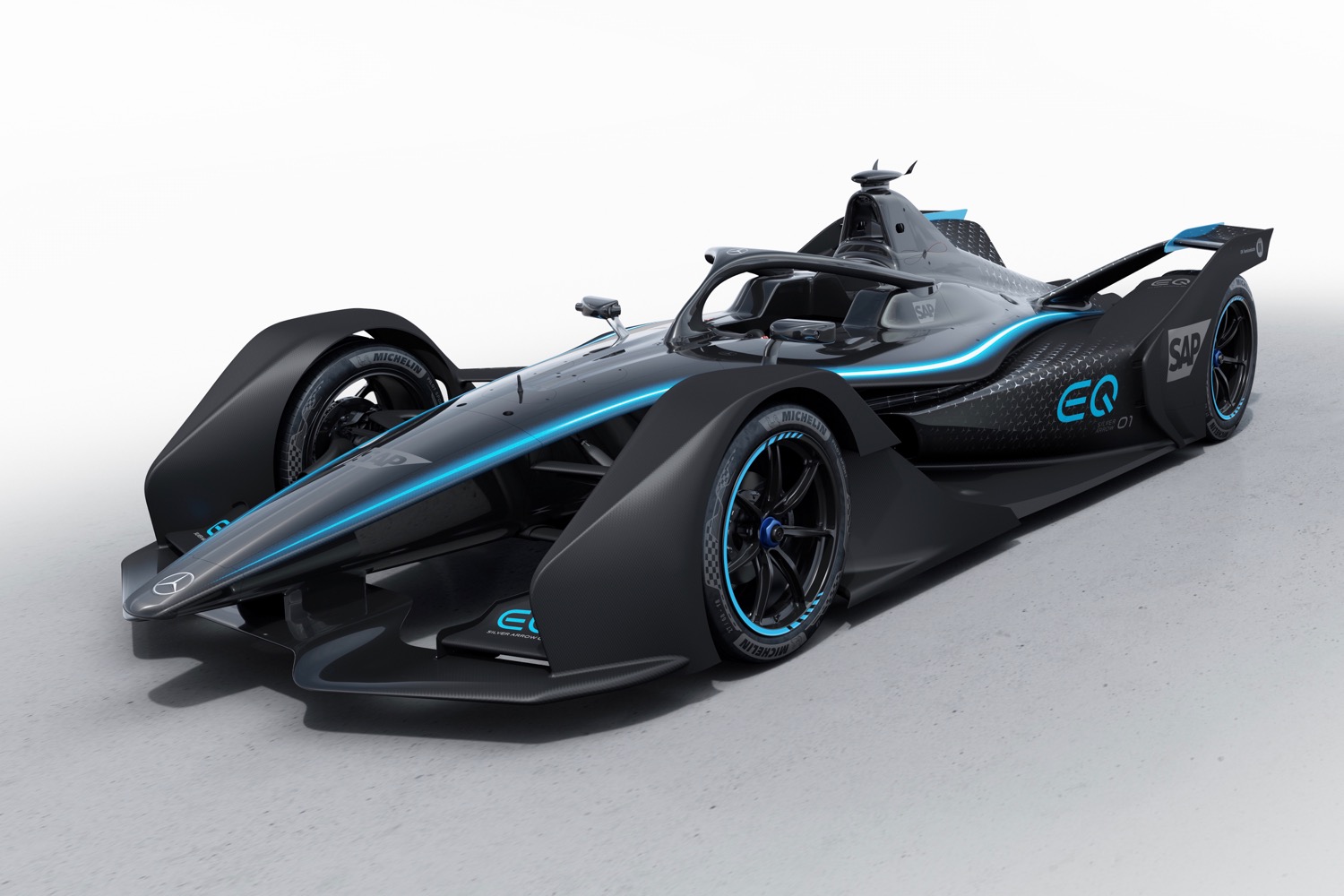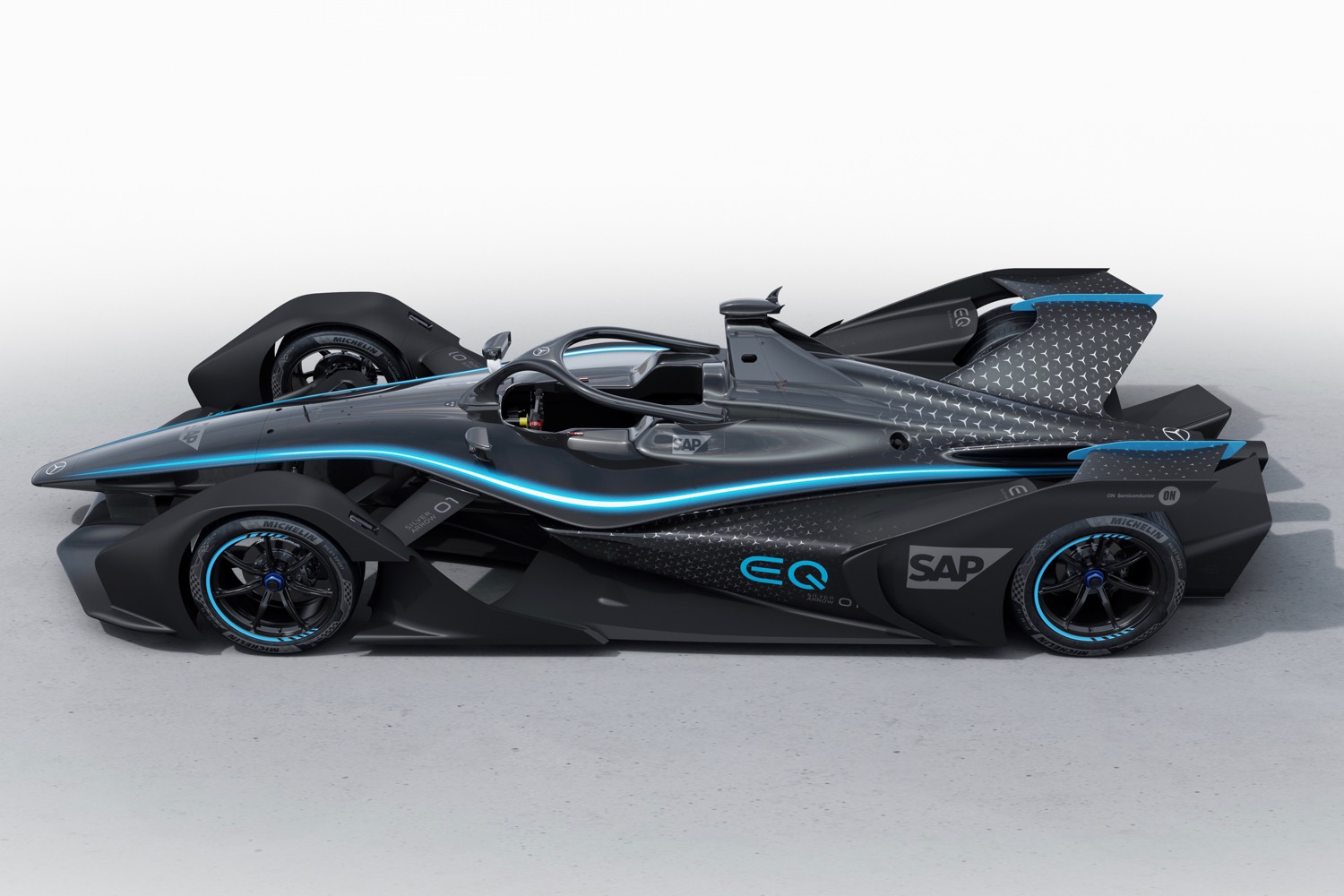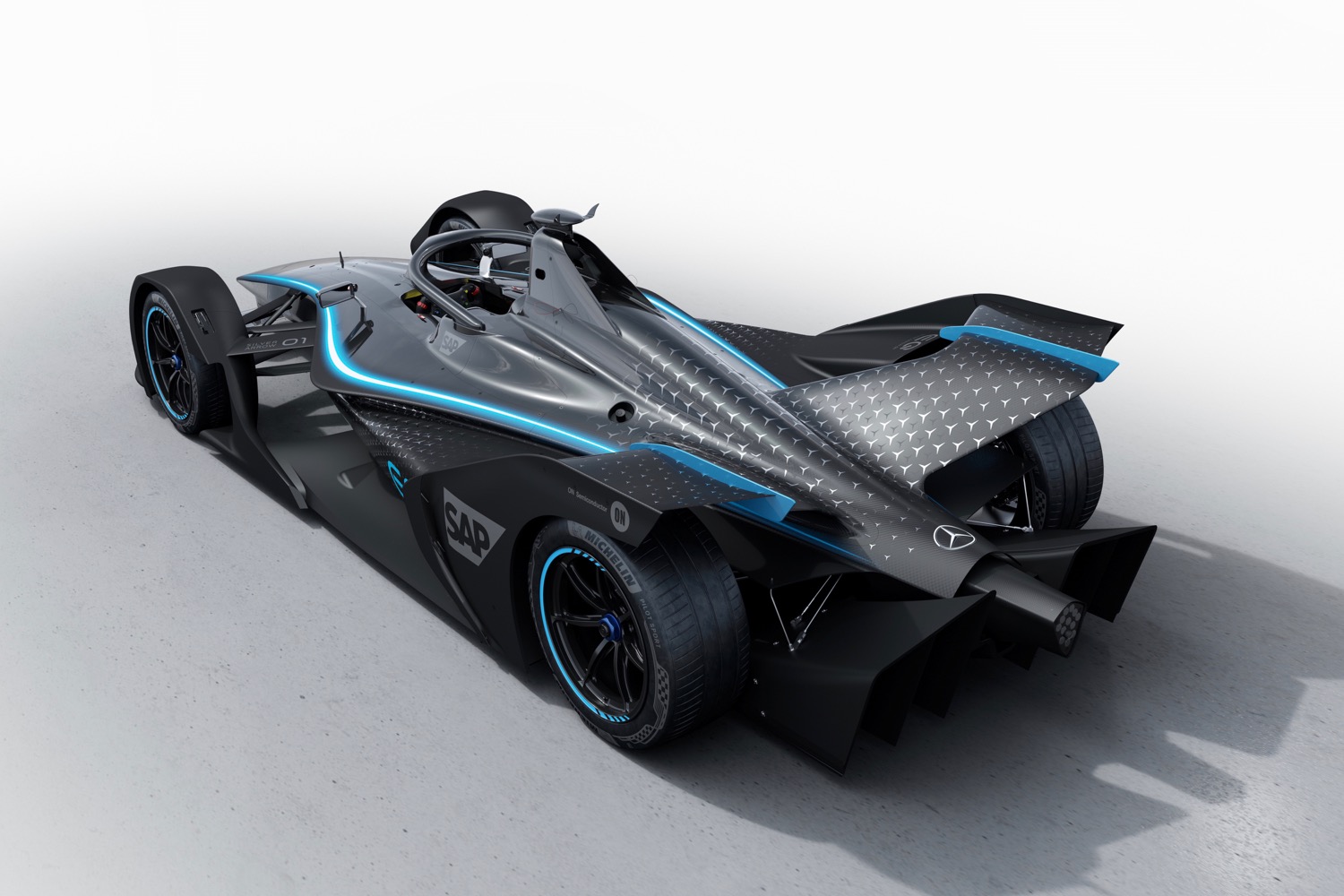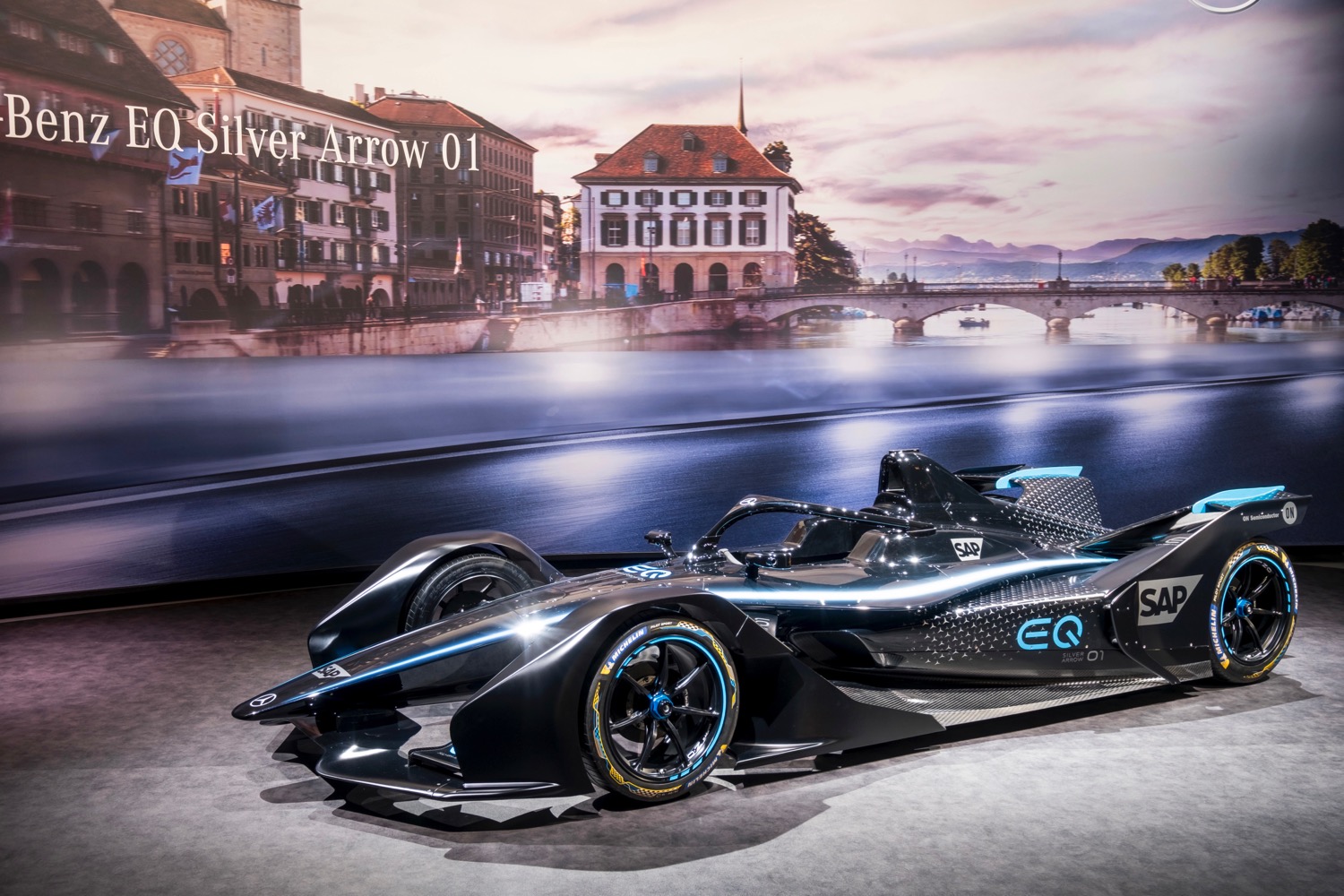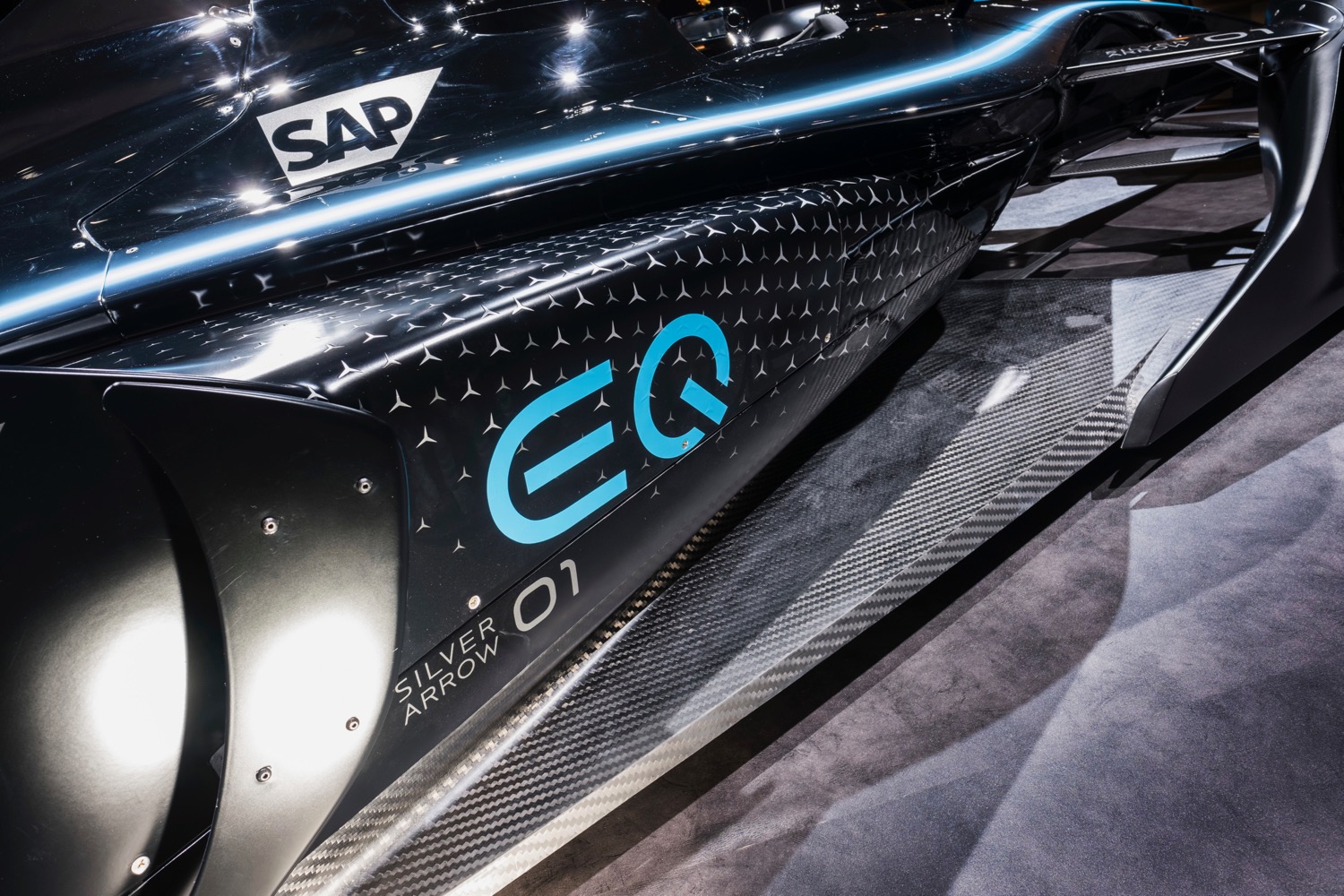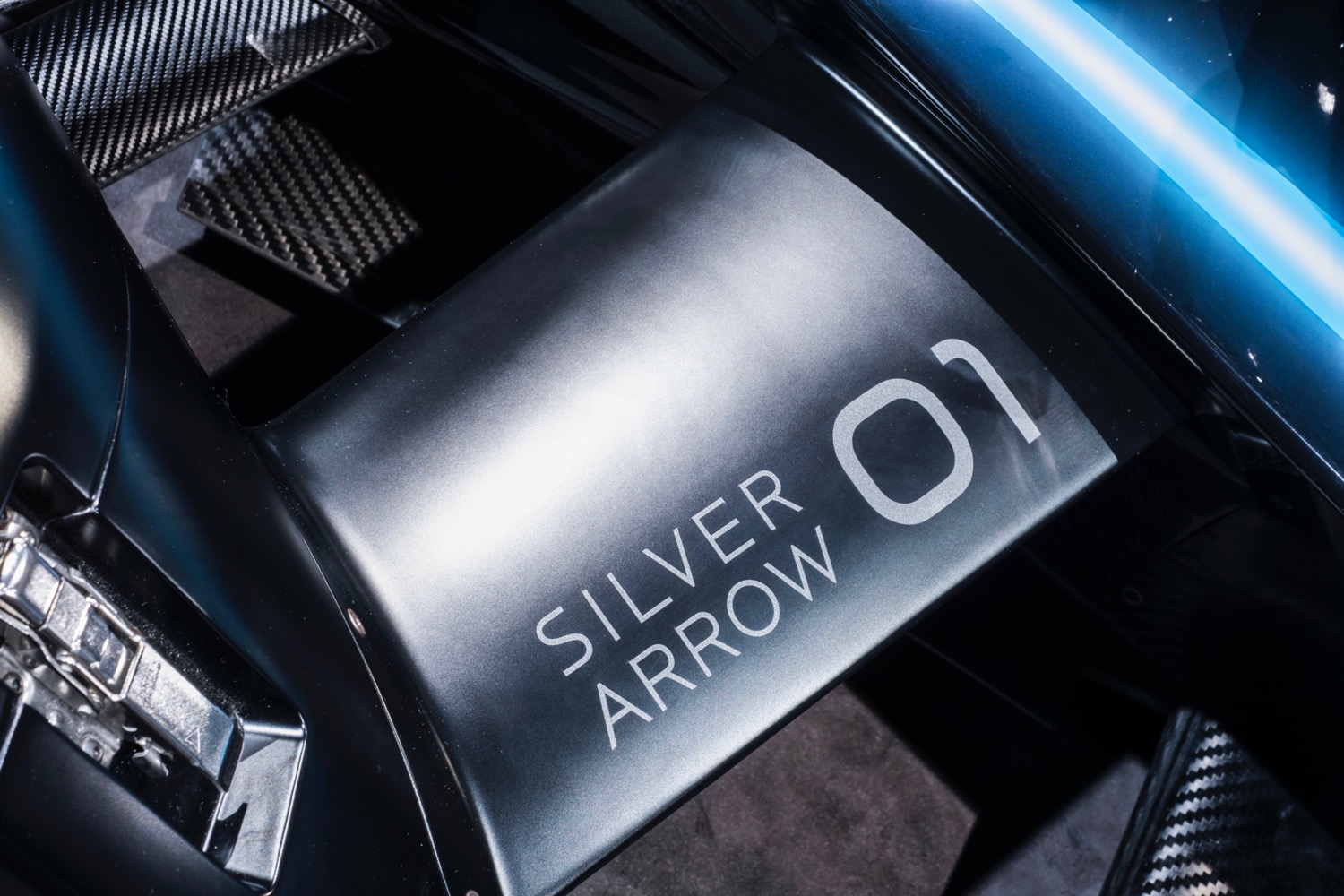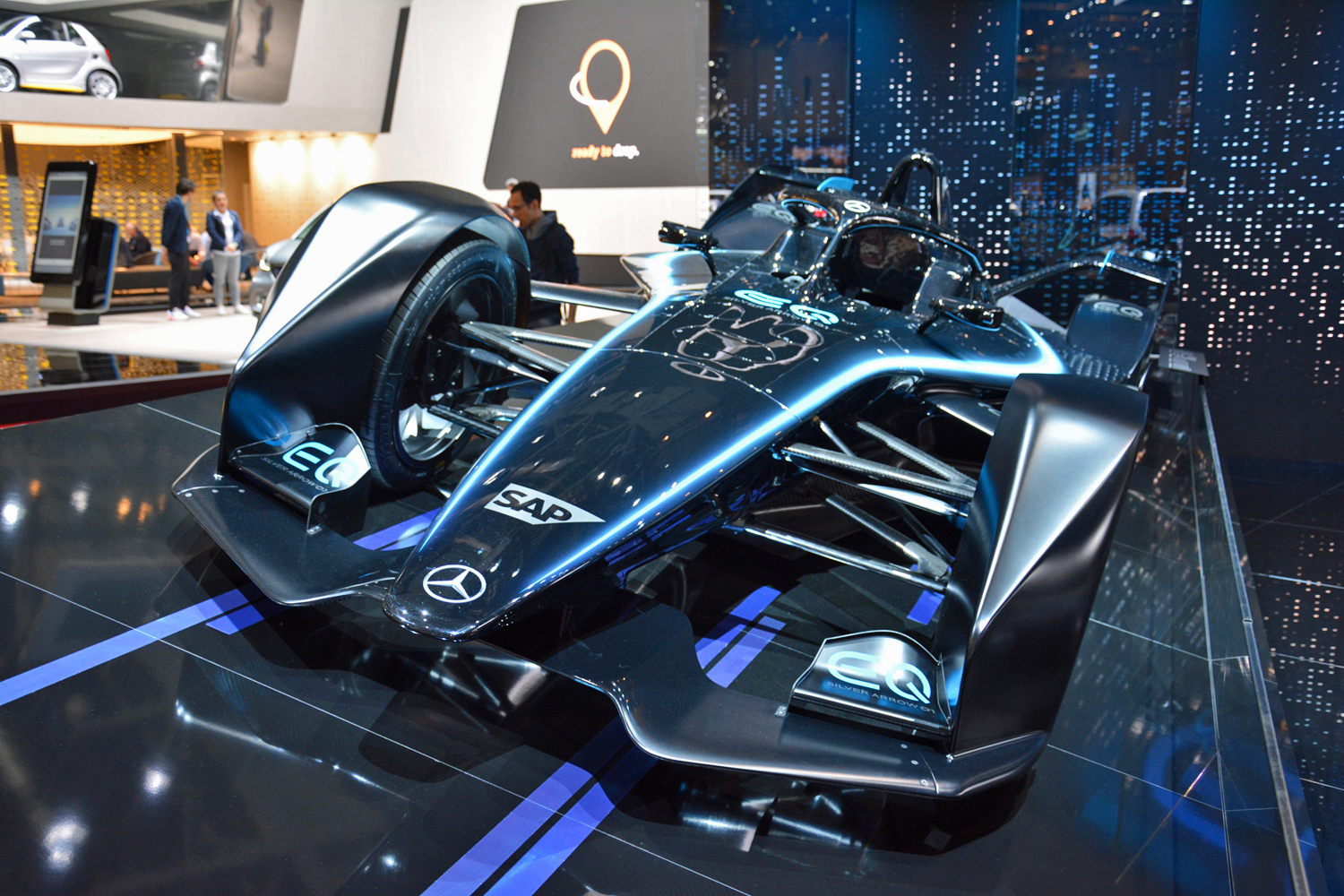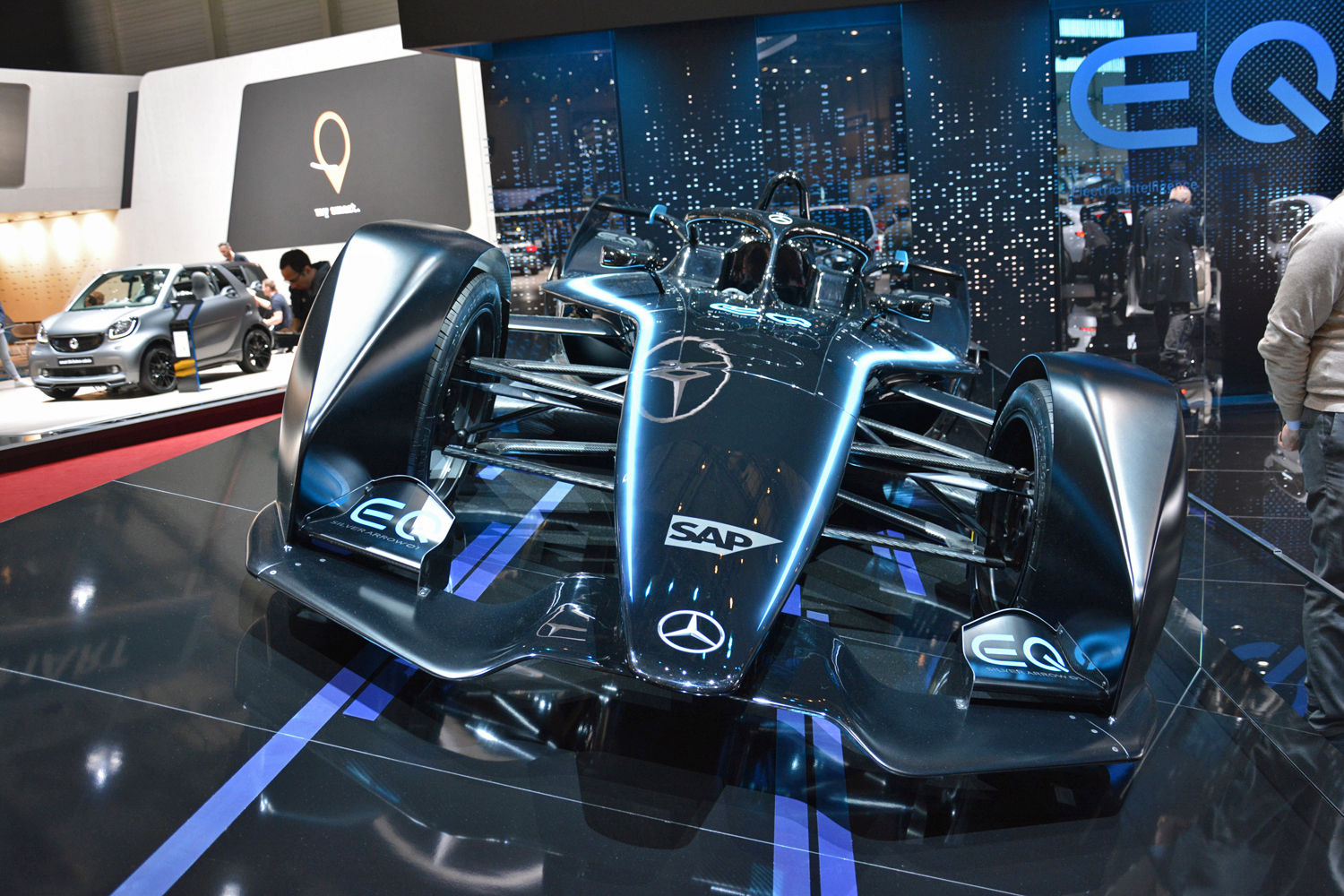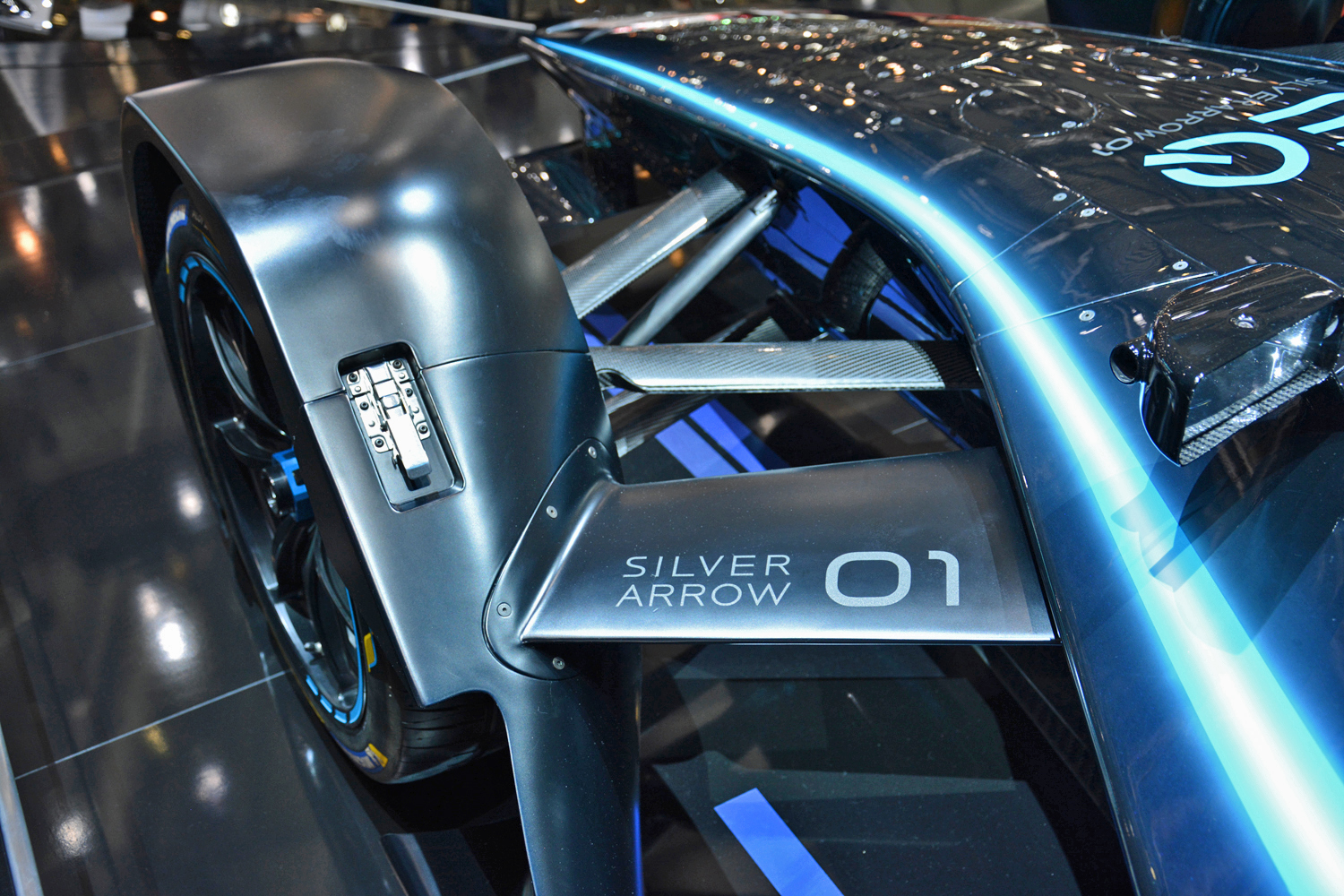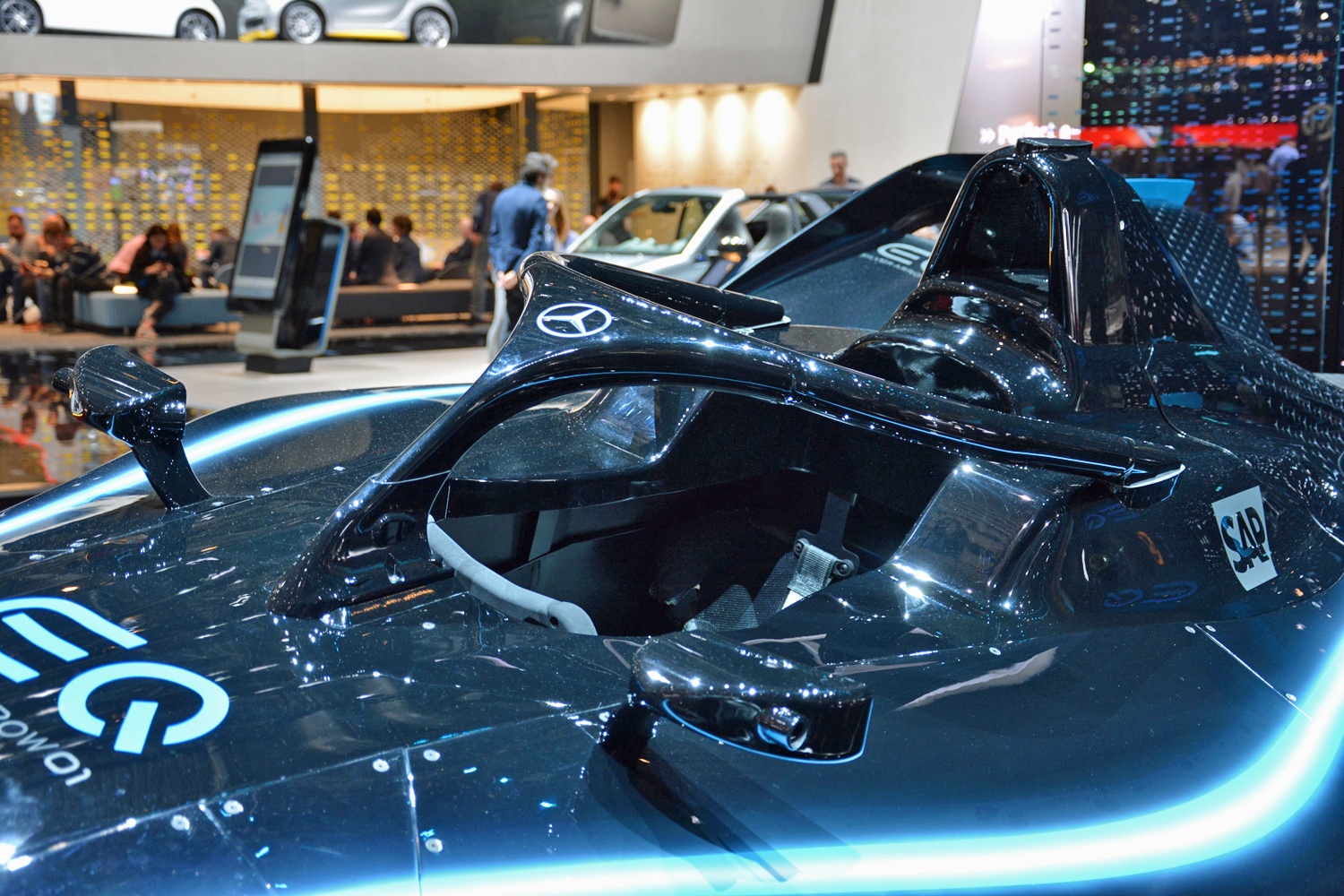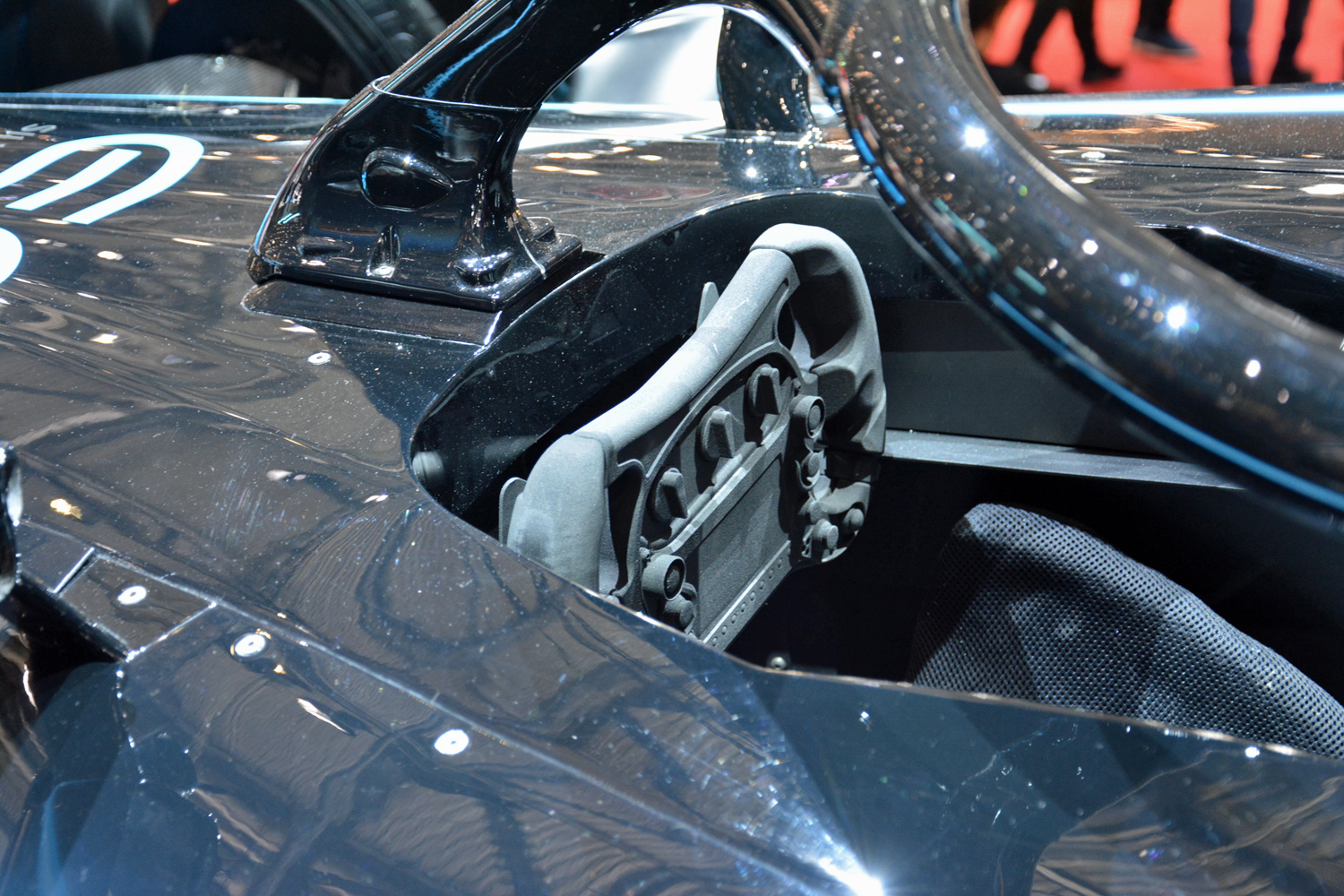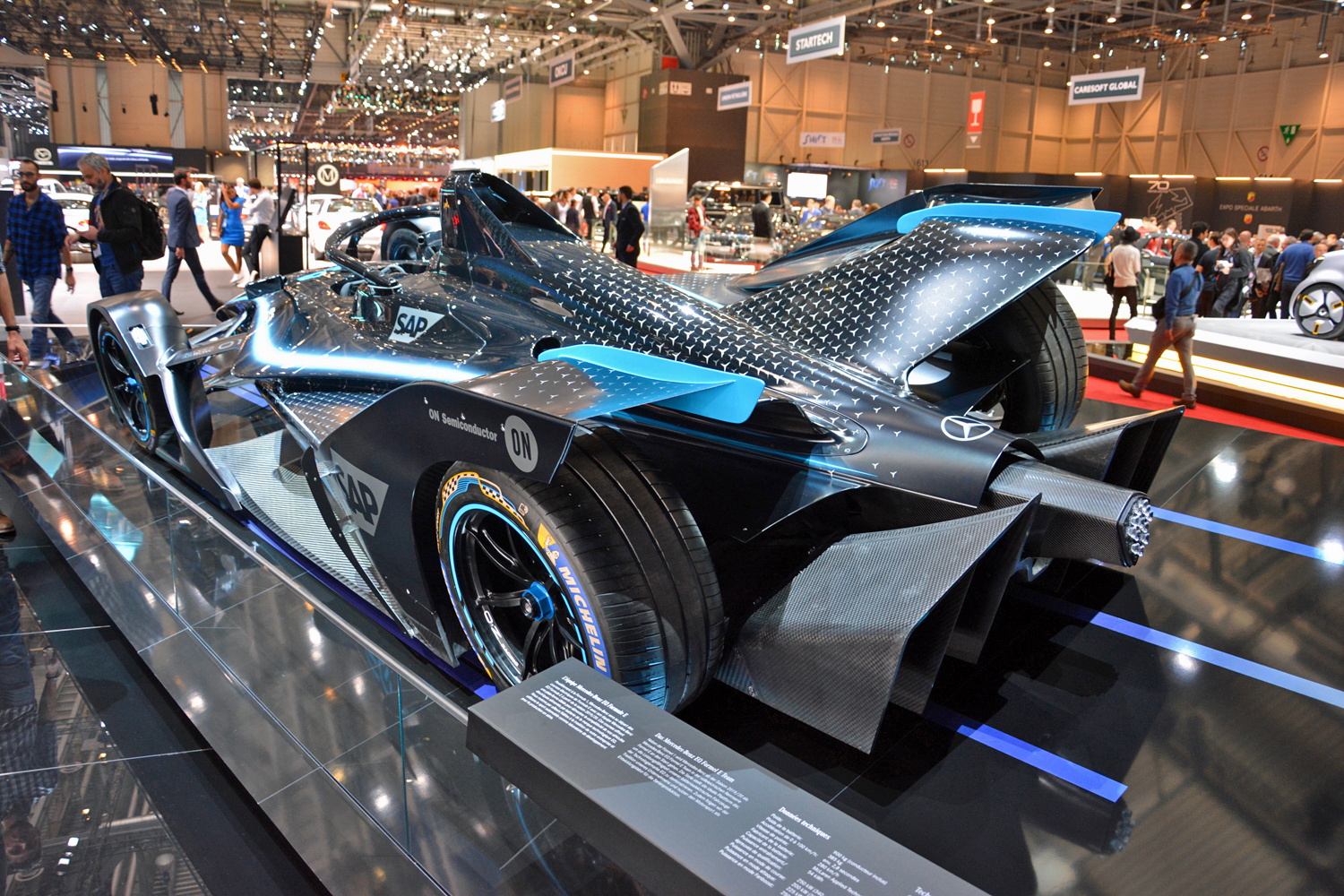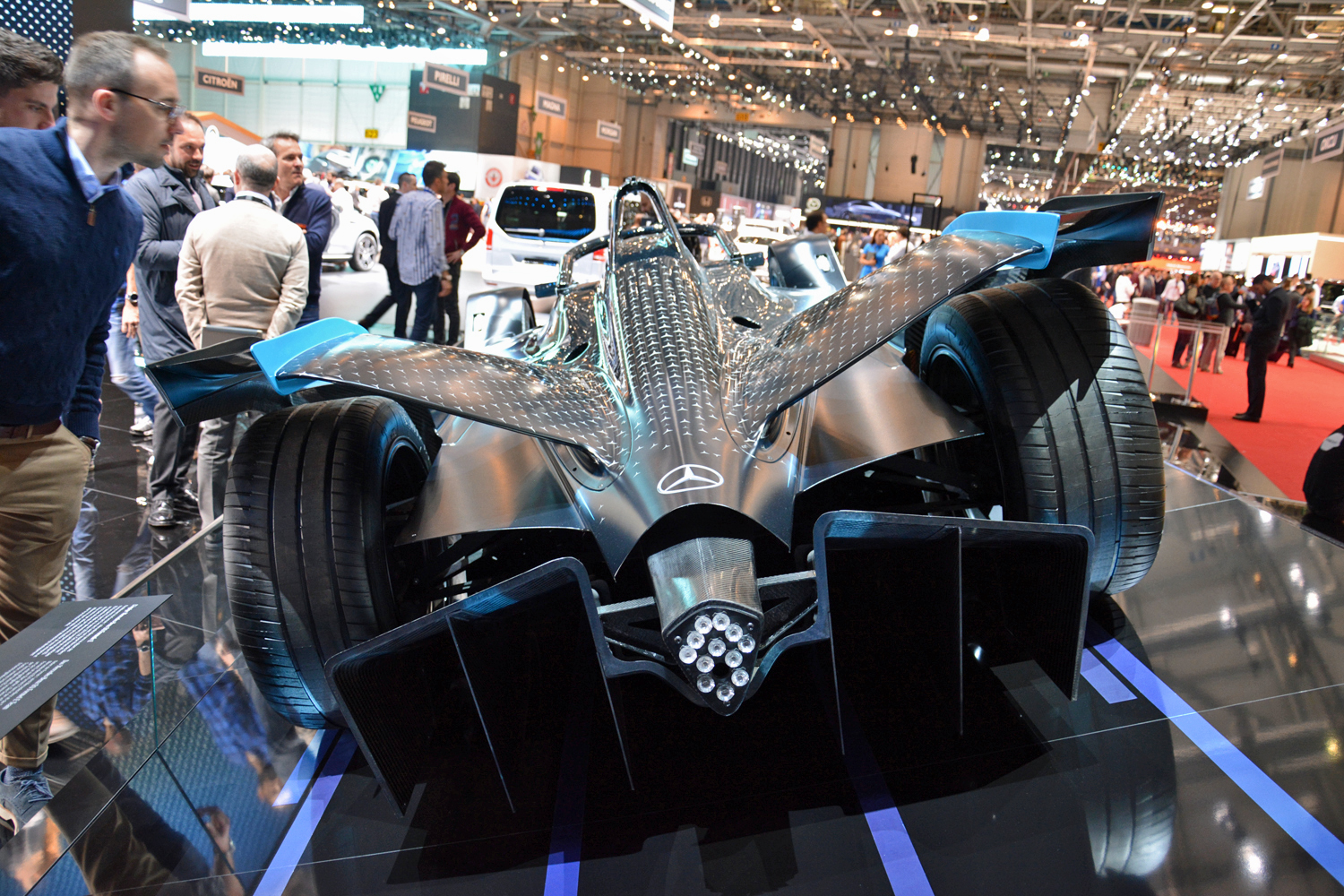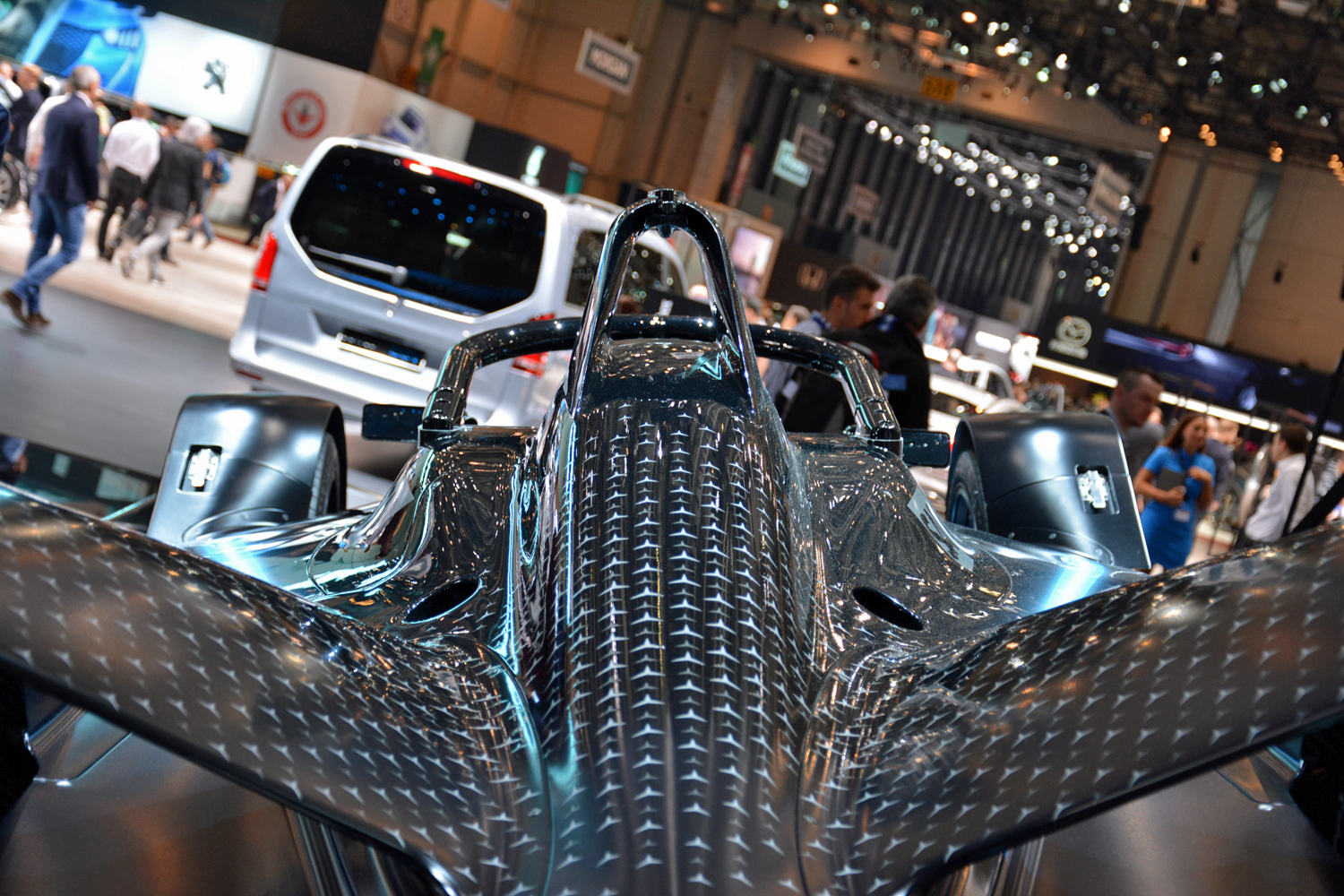Mercedes-Benz is dominating Formula One racing. The German automaker won its fifth straight drivers’ and constructors’ championship double in 2018. Now Mercedes is trying to apply its winning ways to Formula E, a race series for electric cars. Debuting at the 2019 Geneva Motor Show, the EQ Silver Arrow 01 is Mercedes’ first all-electric race car.
The electric Mercedes uses the same “Gen 2” design as all other Formula E race cars. Series rules require all teams to use the same chassis and battery pack, although teams are allowed to customize other components, like the electric motors. This is meant to keep costs down and competitiveness up. That’s very different from the “spare no expense” world of Formula One, where Mercedes, Ferrari, and Red Bull have an advantage over the other teams because of their deeper pockets.
Mercedes traditionally refers to its race cars as “Silver Arrows,” going back to prewar machines that wore unpainted bodywork to save weight. “EQ,” meanwhile, is Mercedes’ designation for electrified powertrains, both hybrid and all-electric. The German automaker is methodically adding mild-hybrid and plug-in hybrid powertrains to its production cars, and will soon launch the EQ C electric SUV. But this race car is a completely different animal.
The specifications for Mercedes’ EQ Silver Arrow 01 are similar to those of other Formula E cars. The race car does zero to 60 mph in a supercar-like 2.7 seconds and has a top speed of 174 mph, according to Mercedes. The 52-kilowatt-hour battery pack takes 45 minutes to charge, although that’s not something that takes place during a race. Cars have to run the entire race on one charge. Previously, Formula E drivers switched cars halfway through each race. That made for an interesting spectacle, but didn’t present the best image of electric cars to the public.
The rules of Formula E also mean the EQ Silver Arrow 01 has different power outputs for different situations. During the qualifying sessions that determine the starting positions for each race, the car makes 340 horsepower. But during the race itself, the output is dialed back to 272 hp. That is unless the driver activates “Attack Mode” by driving across a specific area of the track. Then output temporarily increases to 306 hp. Spectators can also vote to give their favorite driver a “Fan Boost,” providing a brief surge of 340 hp.
Gimmicks like “Attack Mode” and “Fan Boost” may rankle traditional race fans, but they are aimed at bringing in a new generation of fans whose idea of exciting racing is an intense round of Mario Kart. That emphasis on engaging with new demographics, as well as Formula E’s eco-friendly image and comparatively low running costs, has attracted a host of automakers. Both Mercedes and Porsche will join for the 2019-2020 season, and Formula E’s ranks already include Audi, BMW, Jaguar, and Nissan.
